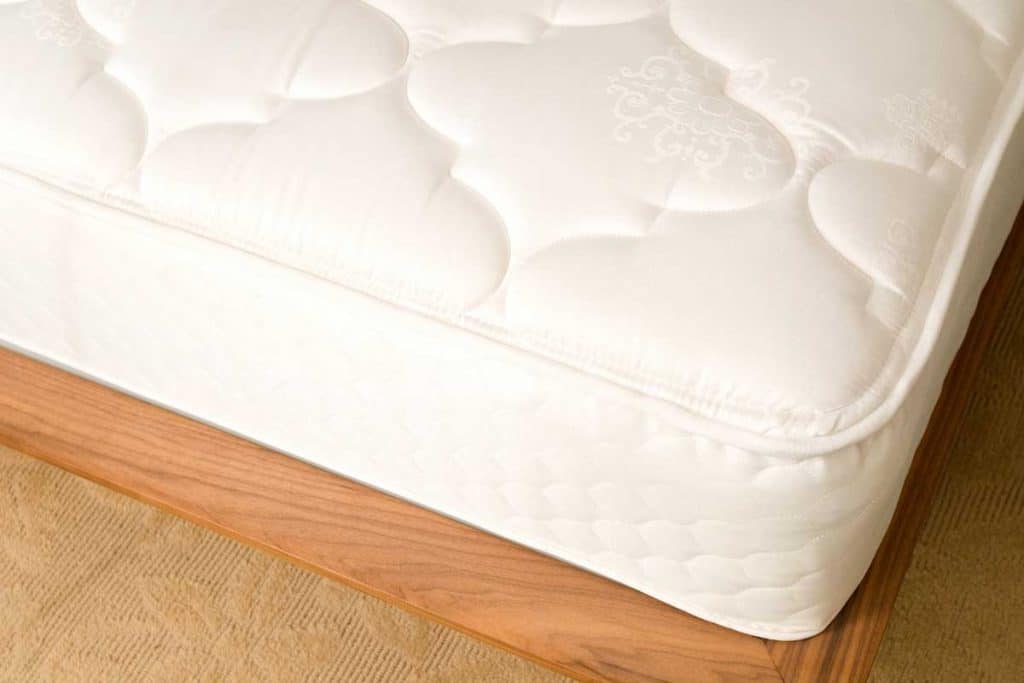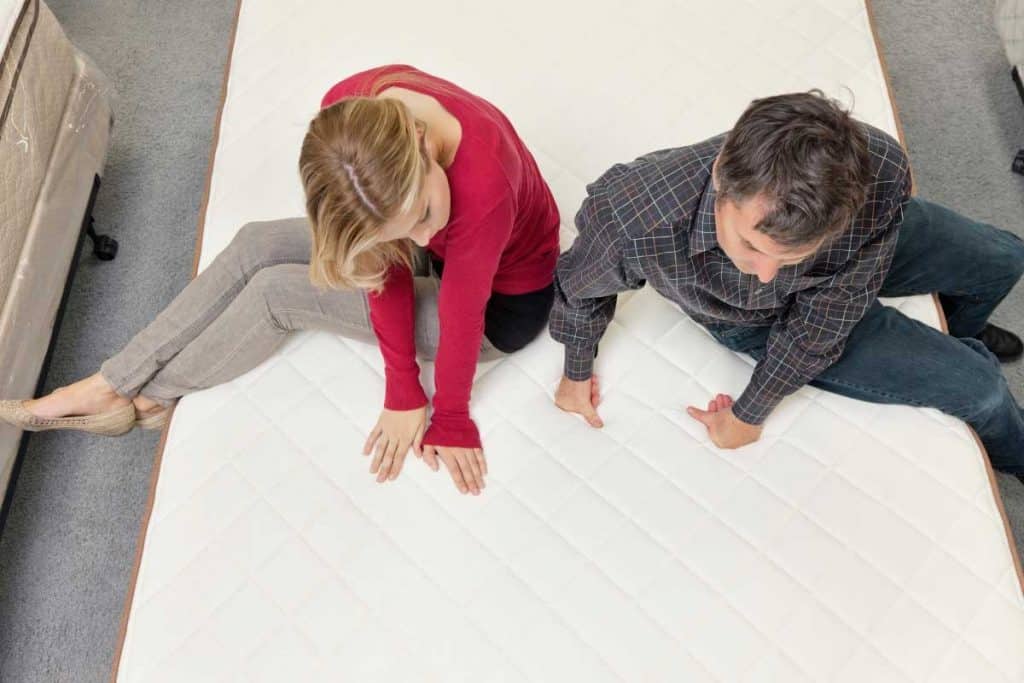
If you’re looking for a new mattress, memory foam density is the first thing you should know about.
Memory foams are popular mattress materials known to alleviate pressure points and joint aches. They’re softer as they provide high body-contouring relief for side sleepers and people with body pains.
While it has its pros and cons, one thing most people look after memory foams is its density. Its density refers to the cubic foot of the foam which can make the material more solid and heavy. But this does not indicate that the foam is firmer or harder. In fact, dense memory foam mattresses allow more pressure-relief and body contouring.

Types of memory foam density
Foam density depends on the layers it contains. Mattresses like these usually have 3 lbs. and heavier in terms of weight. We’ll guide you through the different types of memory foam solidity and for different body pressures.
1 lb. to 3 lbs. (Low)
These mattresses are quite light and perfect for travelers or people in need of sleeping mats. However, for those who want better sleep on their beds, these kinds of mattresses don’t offer support to body alignment, pressure points, and body pains.
Sleepers of different weight will easily sink in the mattress, thus, creating a deal of discomfort. In addition, constriction of movement might be limited and could hence, distract you from sleeping. Plus, it offers limited longevity compared to denser materials.
However, these memory foam density will create a cooler sleeping experience and gives off lesser odor problems also. What’s more, it comes cheaper in the market.
Ideal for:
- Travelers
- Side sleepers
- Sleepers who toss and turn a lot
- Men and women who sleep hot
- Individuals who are sensitive to smell
3 lbs. to 5 lbs. (Medium)
A medium-density mattress will provide better support than low-density mattresses. It offers more contouring and better relief for shoulder and hip pains. People with low to average weight will benefit most to this foam density as they tend not to sink deeper on the mattress.
However, this mattress has heat-trapping materials and provides limited airflow because they feel more solid and compact. What’s more, it emits gas-smelling odor especially when it’s new. If you think that’s it, you need to know that this mattress is hard to break in. However, this foam density lasts longer – up to 8 years, in fact.
A lot of people prefer this density over the other two since it’s a perfect combination of comfort and heat control temperature.
Ideal for:
- People with low motion isolation needs
- Side sleepers
- Individuals who usually suffer from shoulder and hip pain
- Persons who need a good combo of softness and temperature control
5 lbs. and more (High)
These heavy foam mattresses offer little support and cooling properties. However, they provide effective pressure point and contouring properties for pain relief.
Another advantage of heavy-density mattresses is that it works well for people with average to heavier weight. Nevertheless, people who are obese will find this material discomforting as they sink deeper on the mattress and feel its heat-trap properties.
Due to its high-solid material, this type of mattress is very durable and long-lasting (up to 10 years). But as mentioned, it has low airflow circulation and high odor emitting properties.
Ideal for:
- Side sleepers
- Average to heavyweight sleepers
- Sleepers with back and hip pain

Features of memory foam you need to know
What does your memory foam contain? Or, what does it involved anyway? Here are some features you need to know in case you’re thinking of purchasing one.
Durability and longevity
Memory foams are an excellent investment for the bedroom as it can be durable and long-lasting. Depending on the density, this material can last around 6 to 10 years if taken care of properly. This is what makes it appealing to homeowners because it can save them money on the long-run.
But, take note, its durability property makes the material harder to break. So, if you’ve purchased a new memory foam, expect it broken down around 4 to 8 weeks tops. Denser foam mattresses may take you up to 10 weeks!
Bed support
Increased density will give you more support as the sleeper’s body is pushed upwards. This feature allows improved airflow even though the mattress still hugs the body while sleeping. Low-density memory foam mattresses will allow people to sink and conform to the material’s heat-trapping properties. Getting in and out of the bed will also be easier compared to thinner mattresses.
Sleeping hot with memory foam
Memory foams are notoriously known for their heat-trapping properties. The denser the material, the more it’ll retain the body heat of the user. Pregnant or menopausal women will likely suffer sleeping hot and might need another option to cool off their bodies. A low-density foam might have a better airflow, but it doesn’t have that support for pressure point and body pains like higher-density ones.
Viscosity and heat sensitivity
The thicker the mattresses feel, the more it is sensitive to heat. They warm up easily due to the hugged body heat, room temperature, or environmental climate. The more a person sinks into the mattress, the more he or she can feel that heat. People who are overweight and sleep hot should avoid this. Meanwhile, low-density beds don’t react much to temperature because they’re not solidifying as much as the thicker ones. Hence, they don’t trap heat as much as high-density ones.
Low motion transfer and isolation
Unlike innerspring and coils, memory foam, in general, provides low motion isolation movements. This works well particularly for couples where one person tosses and turns throughout the night. One can sleep soundly despite the movements, whereas other mattresses might disturb you.
Odor-emission
Memory foams emit an odor during the first few days of unpacking. What’s more, the denser mattress is, then, the more chemicals create an odor out of the package. Low-density memory foams emit lesser smell and will be off for a few days when aired out in the sun. High-density ones, however, will emit more smell and will be gone for a couple days or week more.



